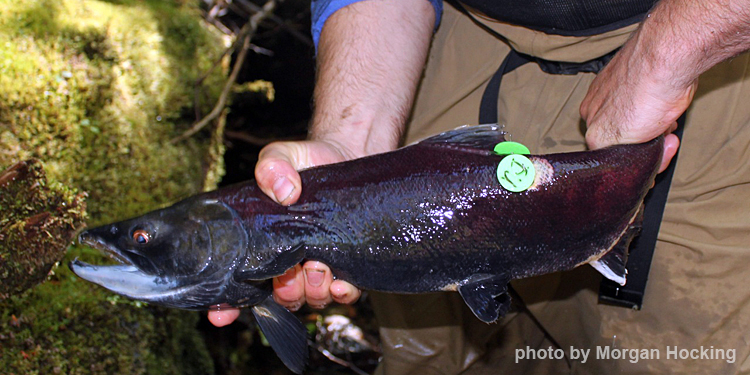
Spotlight: Salmon
Salmon are a vital key to the Great Bear Rainforest ecosystem, where more than 2500 salmon runs happen each year. A wide range of plants and animals, as well as humans, benefit from consuming salmon, including killer whales, sharks, sea lions, seals, otters, bears, loons, mergansers, heron and kingfishers. Insects, algae, mosses, terrestrial herbs, shrubs and ancient trees also benefit from marine based nutrients, including nitrogen from salmon.
Some coastal animals synchronize their high-energy demands with the arrival of the spawning salmon. Reproduction is delayed among minks, for example, so the burden of nursing their young is timed during the salmon-spawning season. The story of salmon and its essential link to the rich diversity of marine life that thrives in the rainforest coastal, nearshore and offshore waters helps us to understand the value of this unique place.
Did You Know?
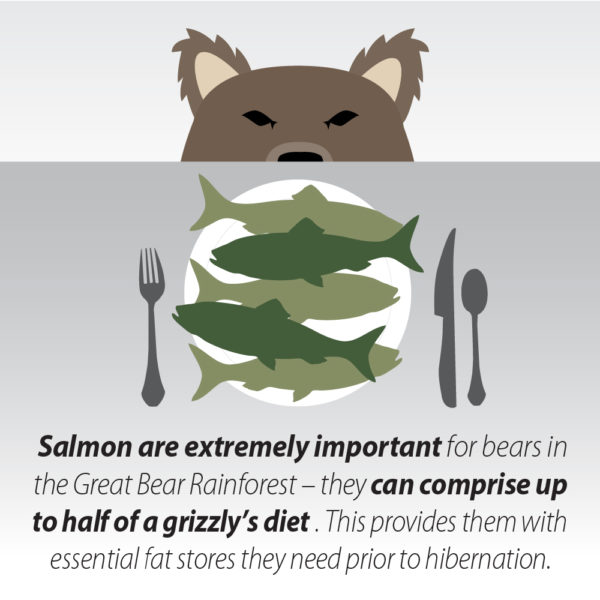
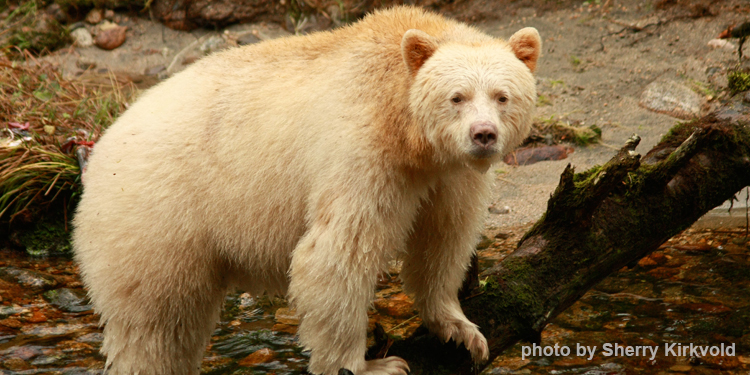
Spotlight: Kermode Bear
The rare, elusive, near-white Kermode bear, or Spirit Bear, is the official provincial mammal for B.C. as it can only be found in the Great Bear Rainforest. Believed to be a genetic variation of the black bear, science shows a single recessive gene is responsible for the bear’s blonde coat. That’s why a black bear female can give birth to a Kermode, as all black bears in the region carry this recessive gene. A better hunter than their black bear kin, Kermode bears are less visible from a fish’s perspective.
Researchers studied the bears’ success rate at catching fish, and the Kermodes were 30% more effective than black bears at catching fish during the day. Spirit Bears are found most frequently on Princess Royal Island which is also the location of the recently created Kitasoo Spirit Bear Conservancy. First Nations’ culture holds the Spirit Bear in high regard, believing the animal to have supernatural powers and the ability to make itself invisible. In some communities, this bear is also known as Ghost Bear. All wildlife within the Great Bear Rainforest is interconnected as each species, including the Spirit Bear, plays a critical role – in partnership with land, sea, climate, plants and trees – in maintaining a distinct, functioning ecosystem.
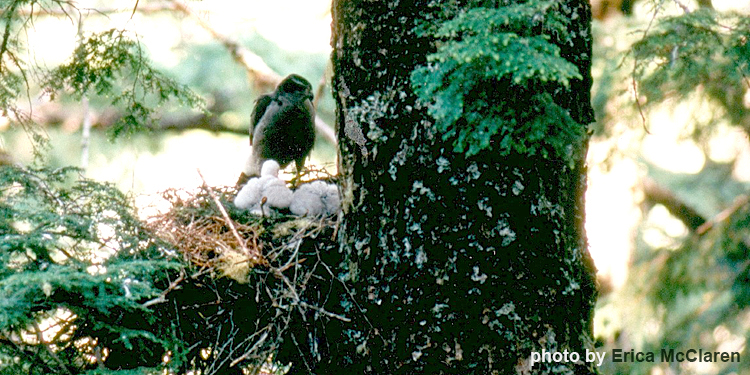
Spotlight: Coastal Northern Goshawk
Of the estimated six million migratory birds who return to the Great Bear Rainforest every year, the Coastal Northern Goshawk plays an important role in this coastal ecosystem. As a top predator, this bird supports the region’s food chain by regulating prey populations. This key species is also an ‘ecosystem engineer’ where each breeding pair builds and maintains between three and nine nests within its home range, but uses only one per year. The remaining nests are used by other birds.
Many different birds can be seen in the rainforest: flitting in and out of dense forest, soaring along the Pacific Flyway, bobbing beneath the water’s surface, wading along the nutrient-rich shorelines. Key species include bald eagles, marbled murrelets and cranes. These birds rely on intact, old-growth stands and pristine watersheds for survival. As predators and scavengers, they help build the forest’s nutrients by transporting and scattering fish scraps, carcasses and waste across the region, which helps to fertilize the soil.

Spotlight: Kelp
Kelp forests are one of the most productive underwater ecosystems on our planet and are abundant within the Great Bear Rainforest. They provide habitat for rockfish, abalone, sea urchins and many more marine species. Kelp forests are also a source of food that fuels marine food webs. Rebounding sea otter populations feed on sea urchin which helps protect kelp forests from urchin overgrazing.
Kelp forests also help calm the waters on wave-exposed outer shores, providing a safe haven for tiny larvae, fish and shellfish. Kelp forests also take on carbon dioxide, so they play a valuable role in removing carbon from the marine environment. Kelp is just one of many different plants found along the coastal regions of the Great Bear Rainforest, some of which do not exist anywhere else in the world.
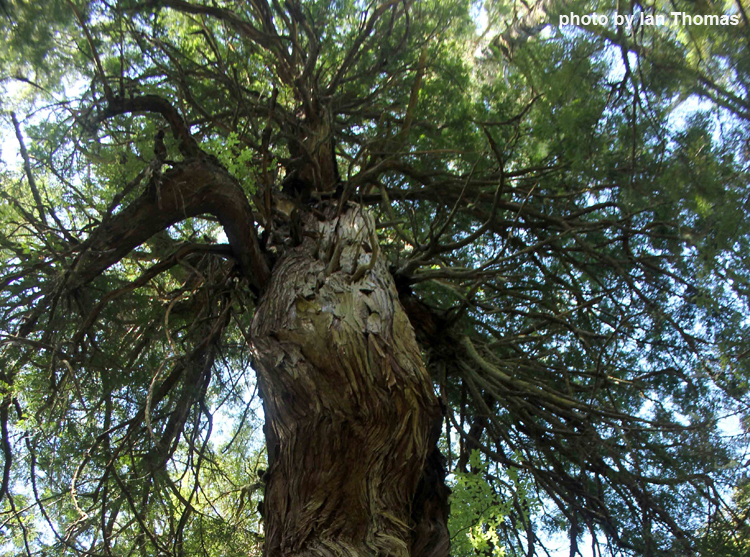
Spotlight: Western Red Cedar
Western Red Cedar can grow up to 70 metres tall and live up to several hundred years old. With its lightweight and rot-resistant wood, red cedar is the most versatile and most widely-used plant among coastal First Nations. Red cedar fibre is treated to make clothing and other materials. The wood is used for a range of purposes including buildings and structures, furniture, guitars and canoes. The fragrant oil of these trees is equally prized for its many applications from skin treatments to perfumes.

